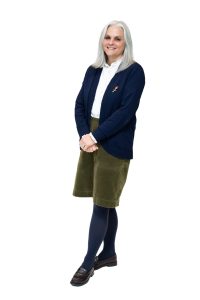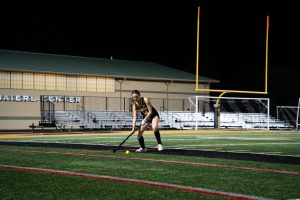Running on Empty
Even while students are at home, some NASH teachers still come to school each morning to teach from their classrooms.
English teacher Ms. Long begins a lesson on a remote day. For Long and several other teachers, teaching in an empty classroom is not ideal, but it’s better than teaching from home.
December 14, 2020
On an average school day at NASH, students frantically rush up the stairwells to get to their next class, while staff members maneuver around each other to the printer to get their paperwork.
But nothing about NASH this year is average.
Lately the bustling hallways of the building have been dead silent, and today begins another stretch of fully remote learning in response to increasing cases of COVID-19 across the state.
Nevertheless, a student-less classroom has not stopped AP Calculus teacher Mr. Solenday from driving to school each morning.
“The building seems dark and lonely,” Solenday said. “I miss hearing Mr. Lyons across the hall and going next door to talk to Ms. Perry about senior class stuff.”
Students have been logging into Blackboard Collaborate for each class from the comfort of their homes to be taught by the majority of teachers who are also at home, leaving the once busy and populated school building mostly empty.
But for Solenday and a few other teachers — including Mr. Buchert, Ms. Failla, Mr. Fellers, Mr. Kodenkandeth, Mr. and Ms. Long, and Ms. Yakich — there’s no place like work.
“Personally, home is too distracting for me. Coming into NASH allows me to separate my work from my home, which is where I relax,” English teacher Ms. Yakich said. “I have also noticed a difference with my students. They will talk to me more when I teach from my classroom. I think it is because it is comforting for them, and it is where they are used to seeing me.”
For Honors Pre-Calculus teacher Mrs. Manesiotis, the decision to teach from her classroom on remote days is a practical one..
“I cannot always count on technology to work from home,” she said. “While at home, my computer has not connected to WiFi When I’m at school, technology problems are less likely to occur.”
Remote learning has also created a physical disconnect between students and teachers. For teachers who spend their day at NASH, empty classrooms have taken some getting used to.
“It’s a bit creepy to be honest, and teaching to an empty room 311 is a thought that was unthinkable to me a year ago,” Solenday said. “But it’s also weird to teach from my kitchen table.”
For Manesiotis, an empty classroom is also a reminder of just how abnormal this school year is.
“NASH is like a ghost town,” she said. “I miss the personal interaction with students. It is also impossible for me to know how my students are doing. All I have to go by is if they are proactive and ask me questions or give me a smiley face icon if I ask how they are doing.”
In-person learning is the ideal method of instruction for most teachers, and being at NASH is sometimes a painful reminder of what the school could look like if there wasn’t a pandemic.
“My students’ smiles and laughs keep me wanting to come back every single day,” Yakich said. “The fact that I cannot see that right now really hurts. When I get to hear them laughing even the slightest bit during class online, my entire day is made.”
Working and learning from home used to seem like a luxury that teachers and students could only dream about, but now it is almost universally dreaded. With split-second changes happening constantly, this school year has been something everyone has had to adjust to.
Continuing to teach from a building with no students gives this small group of teachers a partial sense of normalcy. Until the day comes when students and teachers can safely reunite at NASH, the faculty as a whole will continue to adapt, whether it’s from their kitchens or their classrooms.
“I am very proud of how the students and faculty of this school have adapted to remote learning,” Solenday added. “It’s not ideal, but I do think everyone is doing their best to try to make it work.”













